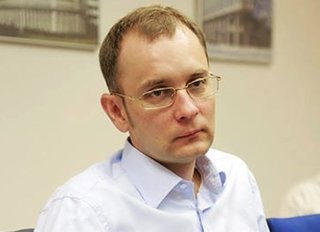
UKRAINE SHOULD CONCENTRATE ON ACCELERATING GROWTH TO 7–10% — MANAGING DIRECTOR OF ICU
Ukraine’s economy is not generating sufficient cash flow to maintain the existing infrastructure and social segment. To correct this problem, the economy must grow at 7–10% a year, notes Makar Paseniuk, Managing Director of ICU Investment Group.
“If GDP doesn’t grow at a fast enough rate, the infrastructure will deteriorate and become unfit for use fairly soon given that it has suffered from under-investment for the past 26 years. By “infrastructure” I mean not only roads and bridges, but also the quality of services, education, health care and cultural institutions,” he said in an interview given to Interfax-Ukraine Agency.
The investment banker added that according to ICU calculations, if Ukraine’s economy grows by 2% a year between now and 2040 in terms of GDP per capita, the country will be on the same level as today’s Honduras, Mongolia, Venezuela, Iraq and Bosnia.
Currently, given the country’s economic base and growth rate of 2%, Ukraine is on its way to becoming a third world country. For practical purposes, given the rate of inflation in the country, a growth rate of 2% feels like a decline. That is why we need to strive for a growth rate of 7–10%, Paseniuk points out.
According to him, to achieve this level of growth in today’s economic climate, the country should concentrate on attracting foreign investment and increasing net exports.
Using a simplified formula, GDP is defined as final consumption plus government expenditure plus investments and net exports. Currently, government expenditures and the size of the deficit are regulated by the IMF. With unemployment increasing and continuing problems in the banking sector, the final consumption component isn’t going to grow. So, what remains are investments and net exports.
Paseniuk noted that given current market conditions for traditional Ukrainian exports such as agriculture, mining and products of the smelting industry, the country should try to develop markets for services. “Ukraine should endeavour to develop tourism by whatever means possible. Let people come here, enjoy our historic cities and mountain resorts and spend money.” Mr. Paseniuk added that this would lead to the growth in construction and the private sector.
In speaking about investments, emphasis should be placed not just on the private sector, but also on large government infrastructure projects. In the government sector, there are still projects that make financial sense and would attract investors, because the economic returns of these projects can be calculated, the investment banker explained.
In Paseniuk’s opinion, these projects can be financed through debt or other instruments with international financial organizations (MFO). With excess global liquidity, commercial sources of financing could also be found. But these projects must be developed; investors do not put money into mere ideas. Due to this lack of effort, there are still no viable projects in the country, despite offers of technical assistance,” Mr. Paseniuk notes.
He also pointed to the need for investment in the public sector and in Ukraine’s natural-resources monopolies like EnergoAtom, UkrTransGas, UkrEnergo, which are in need of extensive CapEx. “The more money directed to Ukrainian contractors and producers, the better,” Paseniuk believes.
As to the private sector, the investment banker pointed out that it is over-leveraged, which makes extending new loans or direct investment difficult. “There are many interesting companies in the country, but most are over-leveraged. There are investors who are interested in these companies, but when they look at their debt ratios and EBITDA, they become wary. Excessive debt makes these companies unattractive.”
In Paseniuk’s opinion, medium-term restructuring of these companies, even at low rates, but keeping the same owners, will not solve the problem if the owner was not developing his business and creating value in the first place. Instead, it results in the bank having to write off another loan, the economy continuing to struggle, and precious time slips away.
“In summary, there is a lack of capital conduits. There is no critical mass of governmental projects or in the private sector that are worth financing or investing in. A solution must be found to attract investment and spur economic growth.”
He also added that another task is to reduce the share of FIG and increase the share of the medium and small enterprises. Under the present circumstances, they can partially or even totally absorb the number of unemployed people that emerged as the result of industrial production “rebalancing” and the continuing restructuring of public sector.
The investment banker remarked that these actions and other reforms in Ukraine being brought by IMF and other IFO are giving the outside world confidence that after that, the macro-economy of Ukraine is being stabilised. This cooperation with Ukraine should strengthen the market for bonds and other financial instruments in the national currency, which would relieve exchange risks for the country.
“To ensure the economy’s recovery, the government’s first order of business must be to control inflation by taking decisive action with fiscal and monetary policy. No less important in addressing the high rate of unemployment. Fiscal policy must be allowed to create the largest possible deficit within IMF guidelines and, at the same time, monetary policy must support liquidity for the expansion of credit,” M. Paseniuk believes.



